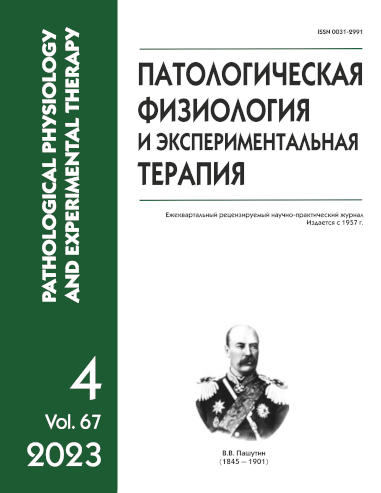Sex differences in age-related changes in the functional activity and expression of MaxiK channels in rat aorta and heart
Abstract
Aging is a dominant risk factor of cardiovascular diseases that remain the leading cause of death worldwide. Ca2+-activated voltage-gated large conductance potassium channels (MaxiK) play an important role in maintaining vascular tone and myocardial contractility. Impaired MaxiK function is associated with disordered vascular relaxation or contraction and heart rhythm. However, the effects of aging on the MaxiK function and the MaxiK contribution to the development of age-associated diseases are unclear. Most studies have been performed on small resistance blood vessels of old animals while in old age, great vessels take on a greater role in the regulation of systemic blood pressure. Data on gender-related changes in MaxiK properties are not available. The aim of the study was to assess the effect of age and sex of animals on the functioning and expression of MaxiK α and β subunits in the aorta and heart. Methods. The study was performed on young (3 months) and aged (18 months) male and female rats. The contraction force of isolated fragments of the thoracic aorta was measured in the isometric mode on a wire four-channel myograph (620M Multi Myograph System, Danish Myo Technology). Gene expression of the pore-forming α (Kcnma1) and regulatory β (Kcnmb4) subunits of the MaxiK channel was assessed in the aorta and various parts of the heart using the quantitative polymerase chain reaction (PCR analysis). Results. Incubation of blood vessels with the MaxiK blocker, iberiotoxin (100 nM), for 30 min increased the contractile reaction of the rat aorta to increasing doses of serotonin (10-7–10-5 M) only in young, sexually mature (3 months old) rats of either sex, which was evident in a shift of the concentration-effect curve to the left. In old rats, both in the presence and absence of iberiotoxin, the sensitivity of blood vessels to the vasoconstrictor effect of serotonin equally increased, which indicated the loss of the negative feedback protective mechanism mediated by MaxiK in aging blood vessels. In the aorta of old males, the level of gene expression of MaxiK α and β subunits remained unchanged. In the aorta of old females, MaxiK β subunit mRNA was decreased by 45%. In the left ventricle of rats of either sex, the pore-forming α subunit gene expression was more than twofold increased. The regulatory β subunit gene expression was reduced by 1.4 and 1.6 times in males and females, respectively. The data suggested that the disruption of the normal 1:1 ratio between the MaxiK α and β subunits may provoke ventricular arrhythmias in old age. The MaxiK α subunit expression predominated in the right atrium of old male rats. On the contrary, in the left atrium of old rats of either sex and in the right atrium of females, the Kcnmb4 gene expression significantly predominated over the Kcnma1 gene expression. Conclusion. During the aging of the aorta of male and female rats, the essential negative feedback response of MaxiK channels to endogenous vasoconstrictors attenuates, which may be a risk factor for the development of hypertension in old age. Imbalanced expression of the MaxiK α and β subunits in different compartments of the aging heart may adversely affect the cardiomyocyte contractility and heart rhythm. The results of the study indicate a negative effect of aging on the properties of MaxiK channels localized in the great vessels and heart of male and female rats. Thus, MaxiK may be a potential target for pharmacological modulation of age-associated hypertension and cardiac arrhythmias.






